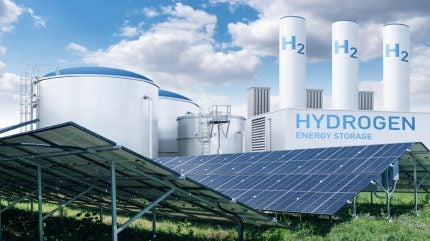
India’s Ministry of New and Renewable Energy (MNRE) has added 25GW of renewable energy capacity for the financial year 2024-2025 (ending 31 March 2025), marking a significant achievement in the sector.
This represents an increase of nearly 35% compared to the previous year’s addition of 18.57GW.
The solar power sector has been a significant contributor to this growth, with capacity additions rising by 38% from 15GW in FY 2024 to nearly 21GW in FY 2025.
This year, India surpassed the milestone of 100GW of installed solar capacity.
In line with the Atmanirbharta initiative, the country’s solar module manufacturing capacity nearly doubled from 38GW in March 2024 to 74GW last month.
Solar PV cell manufacturing capacity saw a threefold increase from 9GW to 25GW.

US Tariffs are shifting - will you react or anticipate?
Don’t let policy changes catch you off guard. Stay proactive with real-time data and expert analysis.
By GlobalDataAdditionally, the country’s first ingot-wafer manufacturing facility began production this year, with a capacity of 2GW.
The Production Linked Incentive (PLI) Scheme for High-Efficiency Solar PV Modules has attracted investments totalling Rs410bn ($4.79bn). This initiative has directly generated jobs for around 11,650 individuals.
A scheme announced by India’s Prime Minister Narendra Modi, Surya Ghar Muft Bijli Yojana benefited more than 1.1 million households by 31 March 2025, with Rs54.3bn disbursed as Central Financial Assistance to 698,000 beneficiaries, promoting rooftop solar adoption.
India’s Green Hydrogen sector also experienced significant developments.
A total of Rs22.2bn in incentives has been granted to support the production of electrolysers with an annual capacity of 1,500 megawatts (MW).
Additionally, Rs22.3bn has been set aside to facilitate the production of 450,000 tonnes per annum (tpa) of Green Hydrogen.
As part of the National Green Hydrogen Mission, the national government has allocated Rs4.5bn to support seven pilot initiatives aimed at reducing carbon emissions in the steel industry.
Similarly, Rs2bn has been earmarked for five pilot projects in the transport sector.
These projects will see the introduction of 37 vehicles powered by hydrogen and the establishment of nine hydrogen refuelling stations.
In FY 2025, Component B saw the installation of 440,000 pumps, marking a 4.2-fold rise compared to the previous year.
Meanwhile, Component C solarised 260,000 pumps, a remarkable 25-fold increase from FY 2024.
Overall, the scheme has now surpassed the milestone of one million solar pumps either installed or solarised.
The financial outlay for the PM-KUSUM government scheme also saw a significant jump, reaching Rs26.8bn, which is 268% more than the previous year.
In the same fiscal year, the Indian Renewable Energy Development Agency (IREDA) experienced a 27% growth in loan approvals, totalling Rs474.5bn, while loan disbursements increased by 20% to Rs301.6bn.
Union minister of new and renewable energy Prahlad Joshi said: “India may have already become or will soon become the third-largest renewable energy capacity holder in the world. This milestone is a testament to Prime Minister Modi’s vision for a sustainable and self-reliant energy future.”



